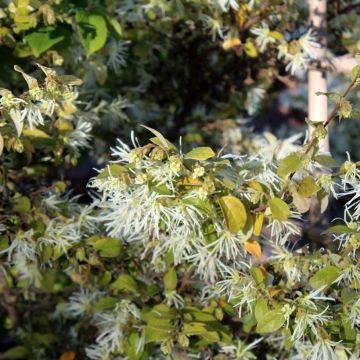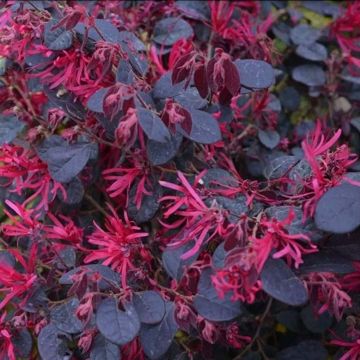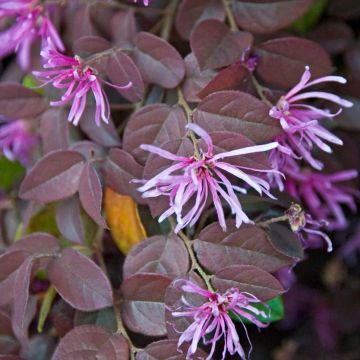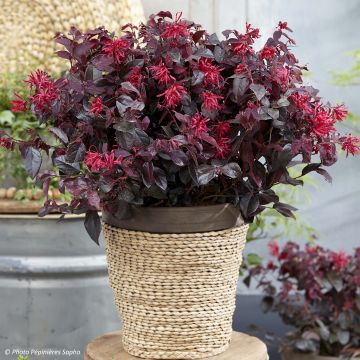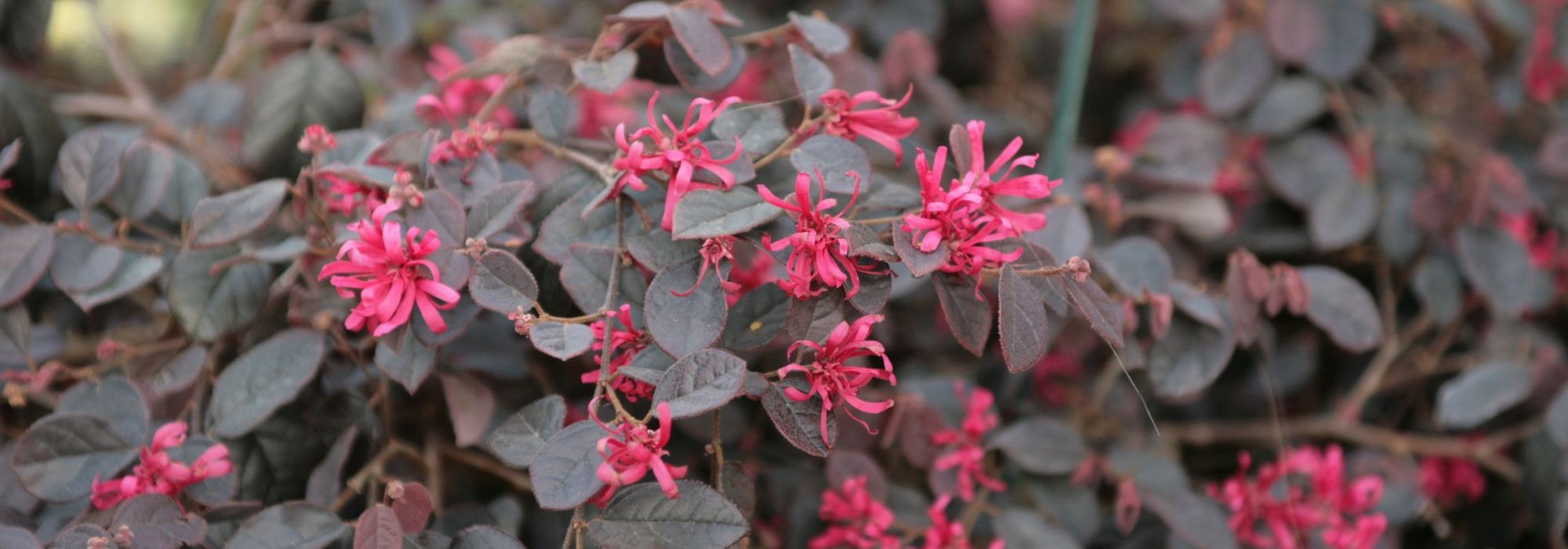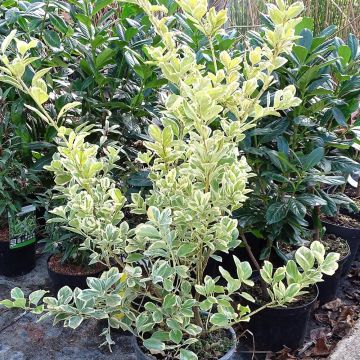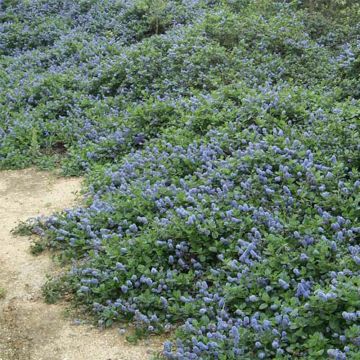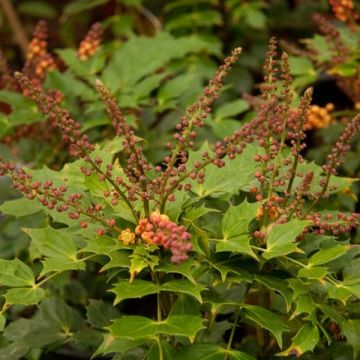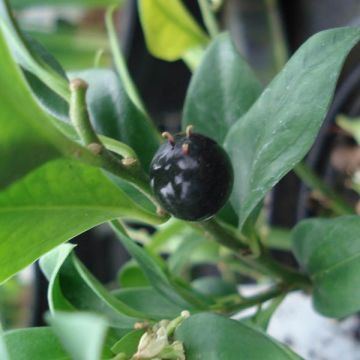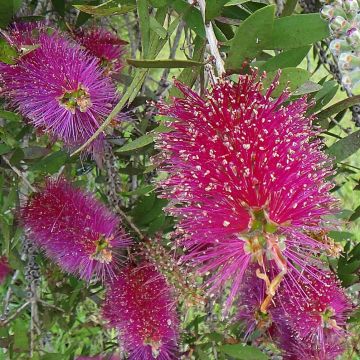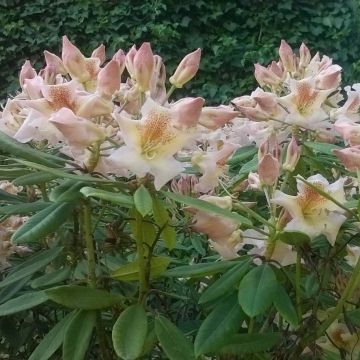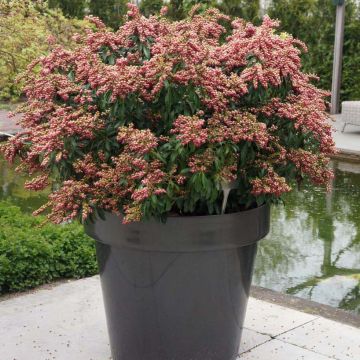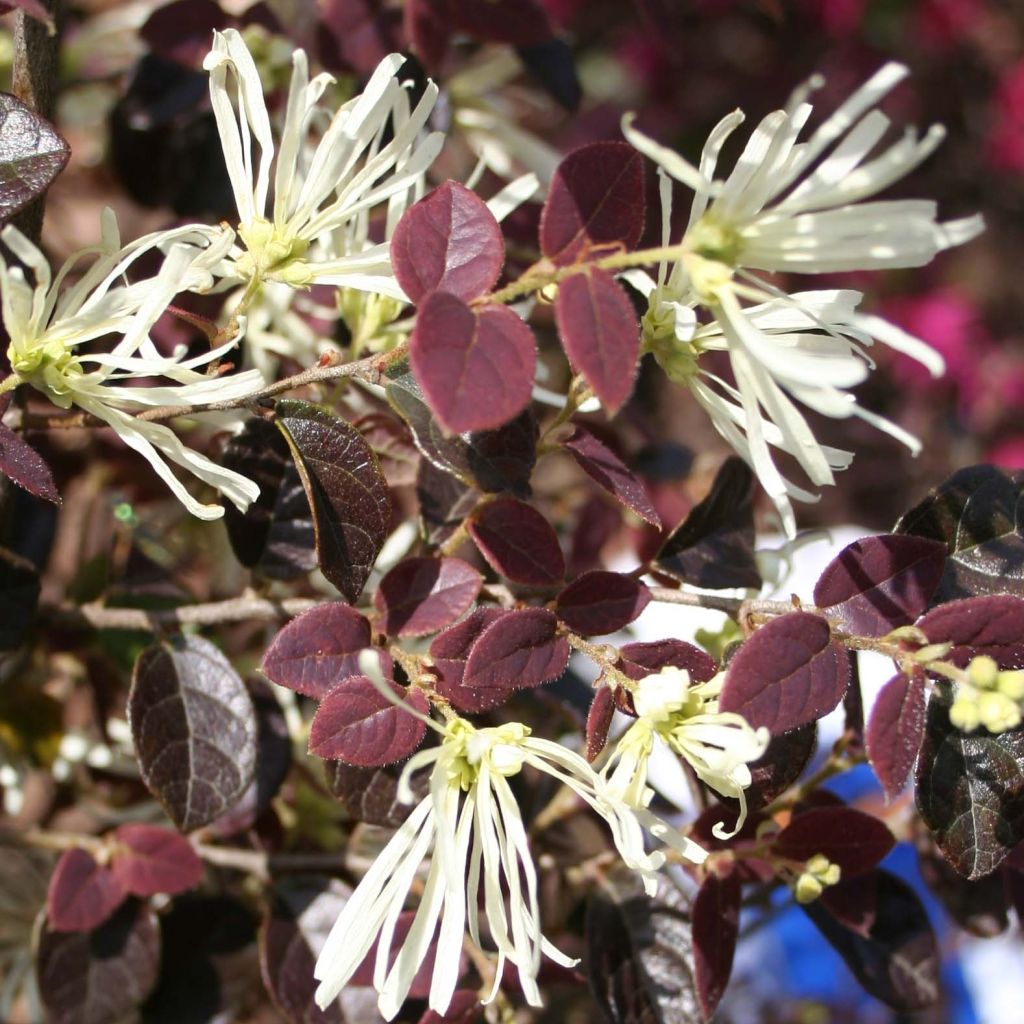

Loropetalum chinense var. rubrum Ruby Snow - Chinese Witch Hazel
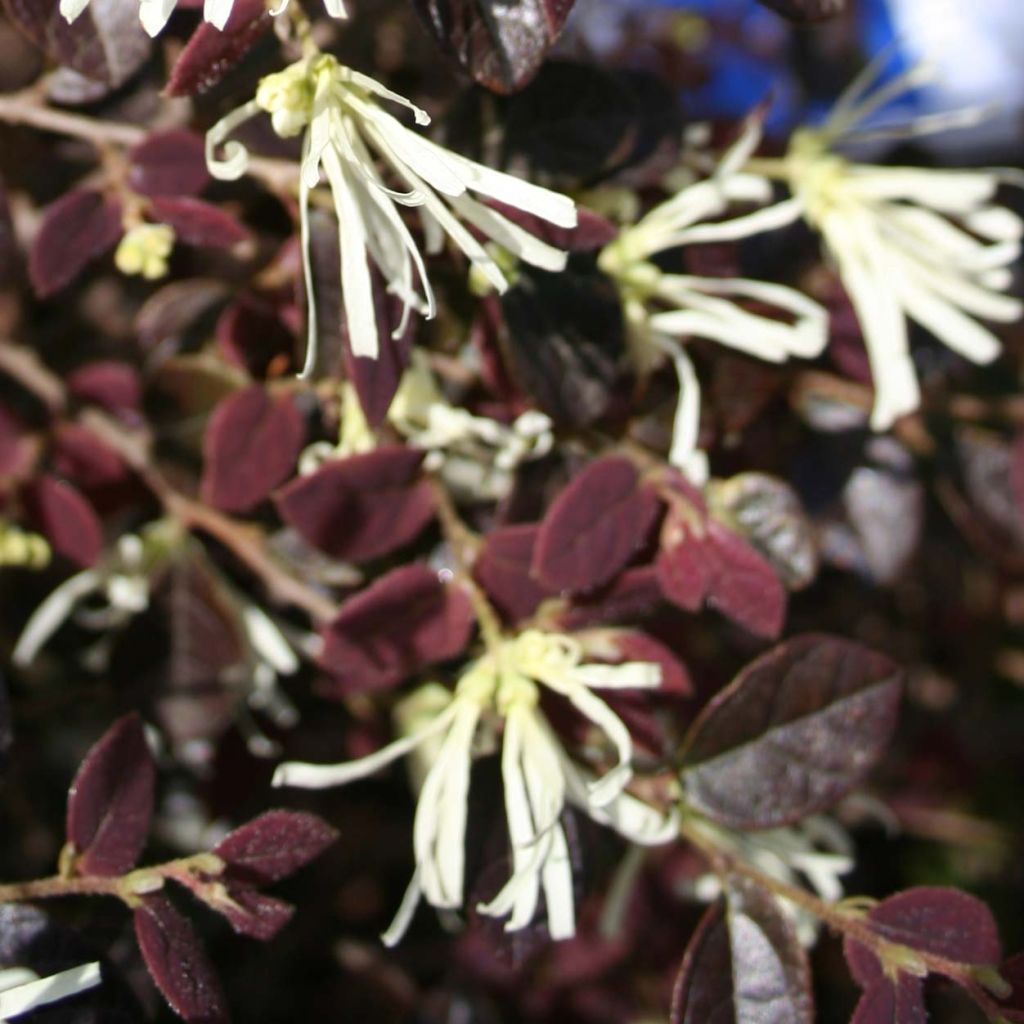

Loropetalum chinense var. rubrum Ruby Snow - Chinese Witch Hazel
Loropetalum chinense var. rubrum Ruby Snow - Chinese Witch Hazel
Loropetalum chinense var. rubrum Ruby Snow (Iwai)
Chinese Witch Hazel, Chinese Fringe Flower
Bin arrivé, mais très chétif et semble fragile sur les racines... a voir. je m'attendais aussi à un feuillage plus pourpre, il est quasiment vert avec des reflets pourpres..
Aurélien, 20/10/2020
Special offer!
Receive a €20 voucher for any order over €90 (excluding delivery costs, credit notes, and plastic-free options)!
1- Add your favorite plants to your cart.
2- Once you have reached €90, confirm your order (you can even choose the delivery date!).
3- As soon as your order is shipped, you will receive an email containing your voucher code, valid for 3 months (90 days).
Your voucher is unique and can only be used once, for any order with a minimum value of €20, excluding delivery costs.
Can be combined with other current offers, non-divisible and non-refundable.
Why not try an alternative variety in stock?
View all →This plant carries a 24 months recovery warranty
More information
We guarantee the quality of our plants for a full growing cycle, and will replace at our expense any plant that fails to recover under normal climatic and planting conditions.
Would this plant suit my garden?
Set up your Plantfit profile →
Description
Loropetalum chinense Ruby Snow® is a devilishly seductive new Japanese creation: this little bush offers a magnificent contrast between its purple foliage and its white strip flowers. They bloom abundantly from late winter to spring, and then more sporadically during the summer or autumn depending on the climate. This unique colour, combined with its small size, allows for many uses and combinations, especially since its foliage is decorative all year round. Plant it in a field of plants or perennials, or even in a large pot on the terrace or balcony, it will enhance all neighboring plants. Its only weakness is relative hardiness: outside of mild regions, it will be grown in pots and stored away from heavy frost in winter.
Loropetalum chinense var. rubrum, or Chinese Fringe Flower with purple leaves, is a bush from the Hamamelidaceae family, as evidenced by its 4 long ribbon-like petals that resemble those of Hamamelis. It is native to the forests and copse of the Himalayas in China, and the northern and eastern regions of India, where it grows up to 1200m (3937ft) altitude. It prefers a rather acidic and well-drained soil, and is more tolerant than it appears: it adapts to fairly dry soils in summer, to heat, and tolerates a little limestone.
'Ruby Snow'® (Iwai) is a recently selected cultivar in Japan by Yuji Suzuki, and distributed in Europe by Plantipp. This cultivar has a compact, airy, and rather upright habit. Its growth is slow, it does not exceed 80cm (31.5in) in all directions when mature. Its foliage persists in winter in not too harsh climates. The entire oval-shaped leaves, 2 to 4cm (0.8 to 1.6in) long, are red when they emerge, then turn purple-violet to brownish, and eventually become dark olive green during the season. The abundant, honey and nectar-rich flowering takes place from February-March to May, earlier or later depending on the climate, and lasts about 3 weeks. Depending on the climate, it can bloom again in summer and autumn. The flowers are grouped in the axils of the leaves, along the branches. They are composed of 4 long ribbon-like petals, slightly twisted, creamy white in colour and lightly fragrant. The dazzling color of the flowers creates a magnificent contrast with the dark and rich hue of the foliage.
Loropetalums are in fashion; interesting in all seasons, well suited for pot cultivation, and not space-consuming. They are elegant and colourful, appealing to urban gardeners as well as lovers of English gardens. They stand out in spring scenes, very beautiful when the garden is still very little in bloom. The honey-rich flowers are also a good source of nectar for bees early in the season. You can cultivate it in pots in cold regions, in a non-limestone but fertile soil, and store it away in winter. Once well established, 'Ruby Snow'® proves to be water-efficient. It is a very pretty variety for decorating small spaces, borders, flowerbeds, and terraces. For example, associate it with dwarf abelias, creeping plumbago (Ceratostigma plumbaginoides), Berberis 'Atropurpurea Nana', forget-me-nots, Brunnera, perennial or shrubby salvias, or even with Santolinias.
Loropetalum chinense var. rubrum Ruby Snow - Chinese Witch Hazel in pictures
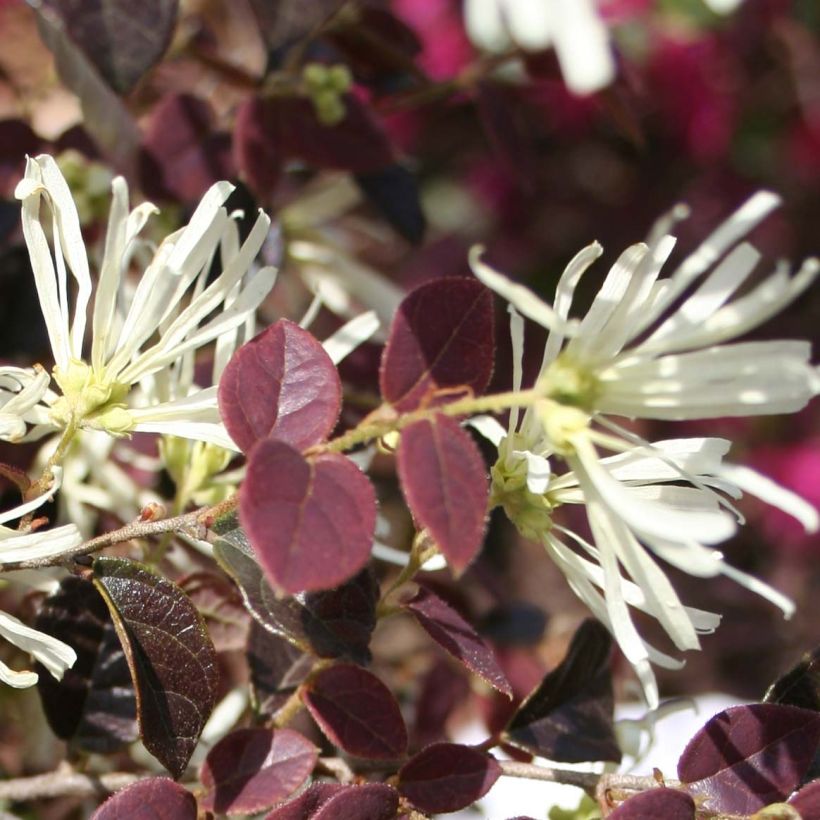

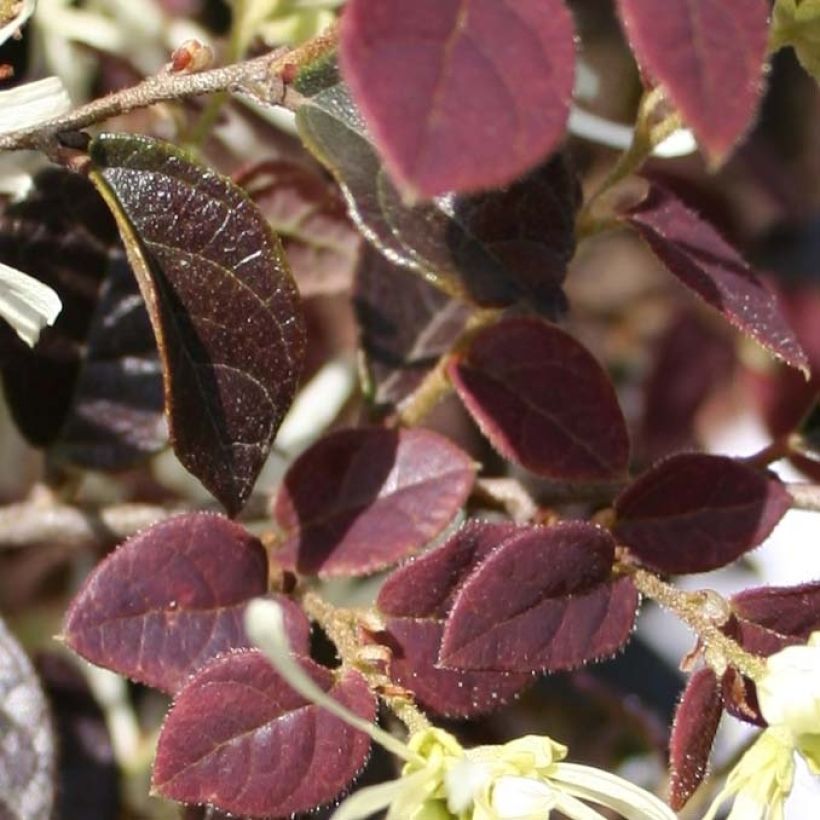

Plant habit
Flowering
Foliage
Botanical data
Loropetalum
chinense var. rubrum
Ruby Snow (Iwai)
Hamamelidaceae
Chinese Witch Hazel, Chinese Fringe Flower
Cultivar or hybrid
Other Loropetalum
View all →Planting and care
Plant Loropetalum preferably in spring (or early autumn in mild climates), in a sunny location that is not scorching (morning sun) or partial shade (especially in hot climates), in well-drained, light soil that remains slightly moist. It requires fertile soil, light, slightly acidic, and low in limestone. However, Loropetalum chinense is robust and relatively tolerant of soil type. It tolerates slightly limestone soils and withstands drought once well established in deep soil, with the base shaded by large perennials or small bushes. It does not tolerate excessive water, which causes its roots, curiously coloured red, to rot. Therefore, it requires good drainage: about twenty centimetres of coarse sand, clay pellets, non-limestone gravel, or volcanic rock should be placed at the bottom of the planting hole. Add compost to the garden soil, leaf compost, and optionally a little sand to lighten it. In a pot, prefer planting in a large container, carefully draining the bottom with gravel or shards. Watering should preferably be done with slightly limestone water or rainwater.
The 'Ruby Snow' variety is not very hardy: once well established, the bush will withstand short frosts of around -10°C (14 °F) in a sheltered location from cold winds and in well-drained soil. Growing it in a pot allows it to be protected in winter in a bright but unheated location.
Diseases and pests: This bush is sensitive to root rot in poorly drained soil. It could also be attacked by olive knot, which can sometimes be fatal.
It is mainly propagated by propagation by cuttings of sections taken from the ends of the stems in late summer.
Planting period
Intended location
Care
Planting & care advice
-
, onOrder confirmed
Reply from on Promesse de fleurs
Similar products
Haven't found what you were looking for?
Hardiness is the lowest winter temperature a plant can endure without suffering serious damage or even dying. However, hardiness is affected by location (a sheltered area, such as a patio), protection (winter cover) and soil type (hardiness is improved by well-drained soil).

Photo Sharing Terms & Conditions
In order to encourage gardeners to interact and share their experiences, Promesse de fleurs offers various media enabling content to be uploaded onto its Site - in particular via the ‘Photo sharing’ module.
The User agrees to refrain from:
- Posting any content that is illegal, prejudicial, insulting, racist, inciteful to hatred, revisionist, contrary to public decency, that infringes on privacy or on the privacy rights of third parties, in particular the publicity rights of persons and goods, intellectual property rights, or the right to privacy.
- Submitting content on behalf of a third party;
- Impersonate the identity of a third party and/or publish any personal information about a third party;
In general, the User undertakes to refrain from any unethical behaviour.
All Content (in particular text, comments, files, images, photos, videos, creative works, etc.), which may be subject to property or intellectual property rights, image or other private rights, shall remain the property of the User, subject to the limited rights granted by the terms of the licence granted by Promesse de fleurs as stated below. Users are at liberty to publish or not to publish such Content on the Site, notably via the ‘Photo Sharing’ facility, and accept that this Content shall be made public and freely accessible, notably on the Internet.
Users further acknowledge, undertake to have ,and guarantee that they hold all necessary rights and permissions to publish such material on the Site, in particular with regard to the legislation in force pertaining to any privacy, property, intellectual property, image, or contractual rights, or rights of any other nature. By publishing such Content on the Site, Users acknowledge accepting full liability as publishers of the Content within the meaning of the law, and grant Promesse de fleurs, free of charge, an inclusive, worldwide licence for the said Content for the entire duration of its publication, including all reproduction, representation, up/downloading, displaying, performing, transmission, and storage rights.
Users also grant permission for their name to be linked to the Content and accept that this link may not always be made available.
By engaging in posting material, Users consent to their Content becoming automatically accessible on the Internet, in particular on other sites and/or blogs and/or web pages of the Promesse de fleurs site, including in particular social pages and the Promesse de fleurs catalogue.
Users may secure the removal of entrusted content free of charge by issuing a simple request via our contact form.
The flowering period indicated on our website applies to countries and regions located in USDA zone 8 (France, the United Kingdom, Ireland, the Netherlands, etc.)
It will vary according to where you live:
- In zones 9 to 10 (Italy, Spain, Greece, etc.), flowering will occur about 2 to 4 weeks earlier.
- In zones 6 to 7 (Germany, Poland, Slovenia, and lower mountainous regions), flowering will be delayed by 2 to 3 weeks.
- In zone 5 (Central Europe, Scandinavia), blooming will be delayed by 3 to 5 weeks.
In temperate climates, pruning of spring-flowering shrubs (forsythia, spireas, etc.) should be done just after flowering.
Pruning of summer-flowering shrubs (Indian Lilac, Perovskia, etc.) can be done in winter or spring.
In cold regions as well as with frost-sensitive plants, avoid pruning too early when severe frosts may still occur.
The planting period indicated on our website applies to countries and regions located in USDA zone 8 (France, United Kingdom, Ireland, Netherlands).
It will vary according to where you live:
- In Mediterranean zones (Marseille, Madrid, Milan, etc.), autumn and winter are the best planting periods.
- In continental zones (Strasbourg, Munich, Vienna, etc.), delay planting by 2 to 3 weeks in spring and bring it forward by 2 to 4 weeks in autumn.
- In mountainous regions (the Alps, Pyrenees, Carpathians, etc.), it is best to plant in late spring (May-June) or late summer (August-September).
The harvesting period indicated on our website applies to countries and regions in USDA zone 8 (France, England, Ireland, the Netherlands).
In colder areas (Scandinavia, Poland, Austria...) fruit and vegetable harvests are likely to be delayed by 3-4 weeks.
In warmer areas (Italy, Spain, Greece, etc.), harvesting will probably take place earlier, depending on weather conditions.
The sowing periods indicated on our website apply to countries and regions within USDA Zone 8 (France, UK, Ireland, Netherlands).
In colder areas (Scandinavia, Poland, Austria...), delay any outdoor sowing by 3-4 weeks, or sow under glass.
In warmer climes (Italy, Spain, Greece, etc.), bring outdoor sowing forward by a few weeks.































